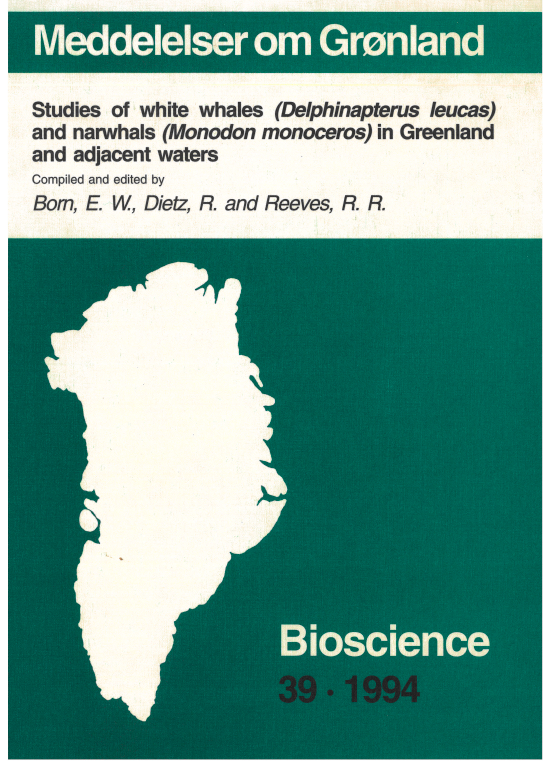Distribution, exploitation and population status of white whales (Delphinapterus leucas) and narwhals (Monodon monoceros) in West Greenland
DOI:
https://doi.org/10.7146/mogbiosci.v39.142541Abstract
Historic and present distribution of narwhals (Monodon monoceros) and white whales (Delphinapterus leucas) in West Greenland is reviewed. The distribution of white whales changed early in this century. They initially disappeared from Nuuk District and later, during the 1920s, from Maniitsoq District. Southwest Greenland (south of 65°N) is no longer a part of the winter or spring distribution of Baffin Bay white whales. Possible reasons for this change are discussed. No large-scale changes in distribution of narwhals have been detected. The major products from narwhals and white whales traded in Greenland are mattak (= whale skin) and narwhal tusks. The mean yield of mattak per whale is estimated to be about 67 and 133 kg per white whale in the municipalities of Upernavik and Qeqertarsuaq, respectively, and 89 kg per narwhal in the municipality of Avanersuaq. Annual reported catches were approximately 900 white whales and 300 narwhals in West Greenland during 1970-1980.
After 1980 the catch reporting system became less reliable and it had virtually collapsed by 1991. However, some statistics of catches during the 1980s are reliable, some are available from other sources and others can be calculated from purchases of mattak. The estimated catches of white whales during the 1980s indicate one of two scenarios: either I) the population estimates from 1981 seriously underestimated the actual population size, or 2) the population has been declining during the 1980s. For narwhals the catches are smaller and the population estimates higher, albeit subject to large variability.

Downloads
Published
Issue
Section
License
Coypyright by the authors and the Commision for Scientific Research in Greenland / Danish Polar Center/Museum Tusculanum Press as indicated in the individual volumes. No parts of the publications may be reproduced in any form without the written permission by the copyright owners.

